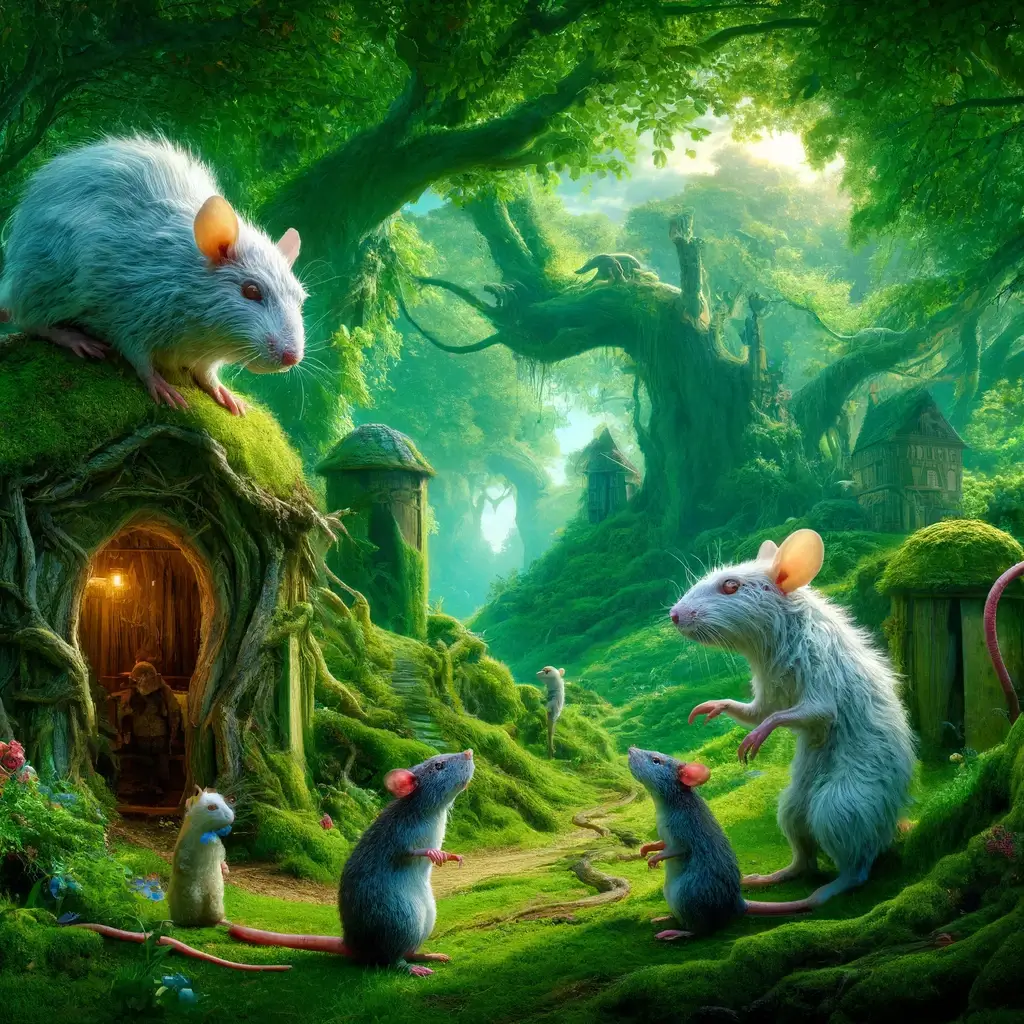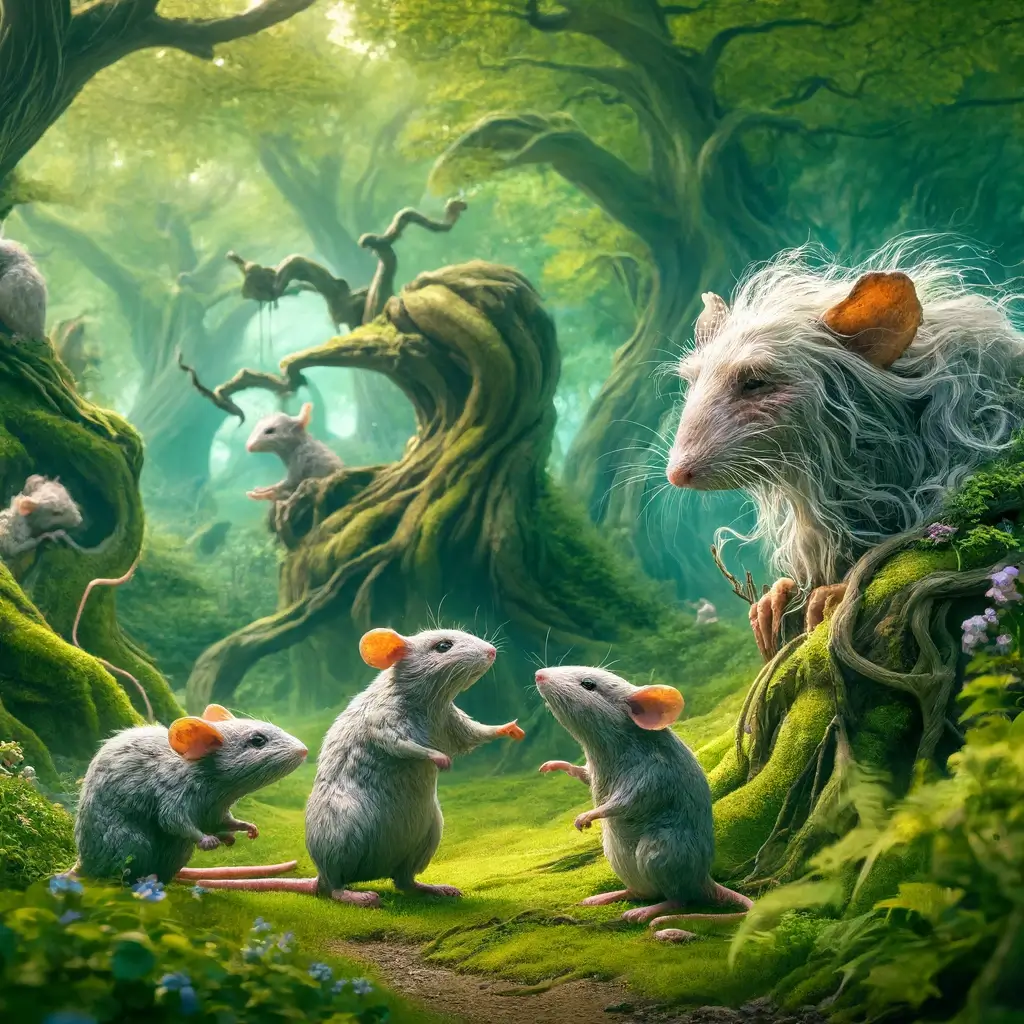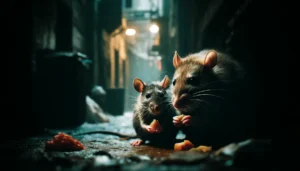Factors That Influence Rat Lifespan
Rats are popular pets known for their intelligence, sociability, and relatively short lifespans compared to other domesticated animals. However, several factors can significantly influence a rat’s lifespan, both in captivity and in the wild. In this article, we’ll explore the key elements that impact a rat’s longevity, including genetics, diet, environment, and healthcare.
Genetics
Genetics play a crucial role in determining a rat’s lifespan. Different rat species and breeds have varying average lifespans, with some living longer than others. For example, the common brown rat (Rattus norvegicus) typically lives between 2-3 years in captivity, while the African giant pouched rat (Cricetomys gambianus) can live up to 8 years.
Moreover, within each species, certain genetic traits can influence longevity. Rats with a family history of long-lived ancestors may inherit genes that promote a longer lifespan. Conversely, rats with genetic predispositions to certain health issues, such as tumors or respiratory problems, may have shorter lifespans.
Diet
A rat’s diet is another critical factor that can impact its lifespan. In captivity, providing a balanced and nutritious diet is essential for promoting longevity. A high-quality rat diet should consist of a variety of fresh fruits, vegetables, and commercially formulated rat pellets that meet their specific nutritional needs.
Overfeeding or providing a diet high in fat and sugar can lead to obesity, which can significantly reduce a rat’s lifespan. Obesity in rats is associated with various health problems, such as diabetes, heart disease, and joint issues, all of which can shorten their life expectancy.
Environment
The environment in which a rat lives can also have a substantial impact on its lifespan. In captivity, providing a clean, spacious, and enriching living space is crucial for promoting both physical and mental well-being.
A suitable rat enclosure should include proper ventilation, comfortable bedding, hiding spots, and various toys and accessories for mental stimulation. Regular cleaning and maintenance of the enclosure are essential to prevent the buildup of harmful bacteria and minimize the risk of respiratory issues.
In the wild, rats face numerous environmental challenges that can affect their lifespan, such as predation, exposure to harsh weather conditions, and limited access to food and water. Urban rats may also be exposed to pollutants and toxins, which can negatively impact their health and longevity.
Healthcare
Regular healthcare and preventive measures are essential for maximizing a rat’s lifespan. In captivity, this involves scheduling regular check-ups with a veterinarian who is experienced in treating small mammals. During these check-ups, the vet can monitor the rat’s overall health, detect potential issues early on, and provide appropriate treatments.
Preventive care measures, such as regular dental check-ups and nail trims, can help prevent common health issues that can impact a rat’s longevity. Additionally, promptly addressing any signs of illness or injury can significantly improve a rat’s chances of recovery and minimize the risk of long-term health complications.
In conclusion, a rat’s lifespan is influenced by a complex interplay of factors, including genetics, diet, environment, and healthcare. By understanding these elements and providing optimal care, rat owners can help their pets live the longest, healthiest lives possible. While wild rats face numerous challenges that can impact their longevity, those in captivity with dedicated owners have the potential to thrive and enjoy a long, fulfilling life.

Rat Species and Their Average Lifespans
Rats are a diverse group of rodents, with over 60 known species found worldwide. Each species has unique characteristics and adaptations that help them thrive in their specific environments. One fascinating aspect of these different rat species is the variation in their average lifespans. In this article, we’ll explore some of the most well-known rat species and their typical life expectancies in both captivity and the wild.
Brown Rat (Rattus norvegicus)
The brown rat, also known as the Norway rat or common rat, is one of the most widespread rat species globally. In captivity, brown rats typically live between 2-3 years, with some individuals reaching up to 4 years with proper care. However, in the wild, their lifespan is often much shorter, averaging around 1-2 years due to predation, disease, and environmental challenges.
Black Rat (Rattus rattus)
The black rat, also called the roof rat or ship rat, is another common species found in many parts of the world. Like the brown rat, black rats in captivity can live between 2-3 years on average, with some individuals surviving up to 4 years. In the wild, their lifespan is usually shorter, around 1-2 years, due to similar factors affecting brown rats.
African Giant Pouched Rat (Cricetomys gambianus)
The African giant pouched rat is a large rat species native to sub-Saharan Africa. These rats are known for their intelligence and have been trained to detect landmines and tuberculosis. In captivity, African giant pouched rats have a remarkably long lifespan compared to other rat species, living an average of 6-8 years, with some individuals reaching up to 10 years. In the wild, their lifespan is thought to be shorter, but data is limited due to their elusive nature.
Gambian Pouched Rat (Cricetomys gambianus)
The Gambian pouched rat, a subspecies of the African giant pouched rat, is native to the savannas and forests of West Africa. Like their larger counterparts, Gambian pouched rats have a longer lifespan than many other rat species. In captivity, they typically live between 5-7 years, with some individuals reaching 8 years or more. Wild Gambian pouched rats likely have a shorter lifespan, but specific data is scarce.
Naked Mole Rat (Heterocephalus glaber)
The naked mole rat is a unique and fascinating species known for its longevity and resistance to age-related diseases. These hairless, subterranean rodents are native to East Africa and live in complex social colonies. In captivity, naked mole rats have an astonishing average lifespan of 25-30 years, with some individuals living up to 35 years or more. In the wild, their lifespan is thought to be slightly shorter, but still impressive, averaging around 15-20 years.
Pack Rat (Neotoma cinerea)
The pack rat, also known as the bushy-tailed woodrat, is a species native to North America. These rats are known for their habit of collecting and hoarding various objects. In captivity, pack rats typically live between 3-5 years, with some individuals reaching up to 6 years. In the wild, their lifespan is usually shorter, around 2-3 years, due to predation and environmental factors.
In conclusion, the lifespans of different rat species vary considerably, with some living significantly longer than others. Factors such as genetics, diet, environment, and susceptibility to disease all play a role in determining a rat’s life expectancy. While wild rats generally have shorter lifespans due to the challenges they face, those in captivity with proper care and attention can often live longer, healthier lives. Understanding the typical lifespans of various rat species is essential for both pet owners and researchers studying these fascinating animals.
Longest-Living Rat Breeds
When considering pet rat ownership, one important factor to consider is the animal’s potential lifespan. While rats generally have shorter lifespans compared to other popular pets like cats and dogs, certain rat breeds are known for their longevity. In this article, we’ll explore some of the longest-living rat breeds and what sets them apart from others.
Gambian Pouched Rat
The Gambian pouched rat is a large, docile breed native to the savannas and forests of West Africa. These rats are known for their intelligence and adaptability, making them popular pets in some parts of the world. Gambian pouched rats have a notably longer lifespan compared to many other pet rat breeds, with an average life expectancy of 5-7 years in captivity. Some individuals have even been known to reach 8 years or more with proper care and attention.
Several factors contribute to the Gambian pouched rat’s longevity. First, their larger size and more robust physiology may help them better withstand age-related health issues. Additionally, their relatively calm and easy-going temperament may reduce stress, which can have a positive impact on their overall health and lifespan.
Dumbo Rat
The Dumbo rat is a popular pet rat breed known for its large, rounded ears that resemble those of the Disney character Dumbo. While their cute appearance is a major draw for many pet owners, Dumbo rats also have a reputation for being one of the longest-living rat breeds.
On average, Dumbo rats live between 3-4 years in captivity, with some individuals reaching 5 years or more with excellent care. Their longevity is often attributed to their generally good health and resistance to common rat illnesses. Dumbo rats also tend to have a relaxed and friendly temperament, which may help reduce stress and promote a longer lifespan.
Hairless Rat
Hairless rats, also known as nude rats or Sphinx rats, are a unique breed that lacks the typical fur coat of other rats. While their appearance may not appeal to everyone, hairless rats have a devoted following among pet owners who appreciate their affectionate and social nature.
Despite their lack of fur, hairless rats have a lifespan comparable to that of other long-living rat breeds. On average, they live between 3-4 years in captivity, with some individuals reaching 5 years or more. Their longevity may be due in part to their reduced risk of certain health issues, such as fur-related skin problems or external parasites.
However, it’s important to note that hairless rats require special care to maintain their health and well-being. They are more susceptible to temperature fluctuations and may need additional heating or cooling to stay comfortable. They also require regular bathing and skincare to prevent oil buildup and skin irritation.
Manx Rat
The Manx rat is a rare and distinctive breed characterized by its tailless or short-tailed appearance. While not as well-known as other rat breeds, Manx rats have gained popularity among some pet owners for their unique look and gentle disposition.
Manx rats have a lifespan that is comparable to other long-living rat breeds, typically living between 3-4 years in captivity with proper care. Some individual Manx rats have been known to reach 5 years or more. Their longevity may be influenced by their generally good health and resistance to certain tail-related injuries or infections that can affect other rat breeds.
In conclusion, while rats may have shorter lifespans compared to some other pets, certain breeds like the Gambian pouched rat, Dumbo rat, hairless rat, and Manx rat are known for their relative longevity. By providing these rats with a healthy diet, a clean and enriching environment, regular veterinary care, and plenty of love and attention, owners can help their furry companions live the longest, happiest lives possible. It’s essential to remember that each rat is an individual, and their lifespan may vary based on a combination of genetic and environmental factors. Nonetheless, choosing a longer-living rat breed can be a rewarding decision for those seeking a pet with the potential for a longer companionship.
Tips for Maximizing Your Pet Rat’s Lifespan
As a pet rat owner, you want to ensure that your furry companion lives the longest, healthiest life possible. While rats have a relatively short lifespan compared to some other pets, there are several steps you can take to maximize your pet rat’s longevity. In this article, we’ll explore some essential tips for promoting your pet rat’s health and well-being, helping them to thrive and enjoy a high quality of life.
1. Provide a Balanced and Nutritious Diet
One of the most crucial factors in maximizing your pet rat’s lifespan is providing them with a balanced and nutritious diet. A high-quality rat diet should consist of a variety of fresh fruits, vegetables, and commercially formulated rat pellets that meet their specific nutritional needs.
Avoid overfeeding your rat or offering them a diet high in fat and sugar, as this can lead to obesity and associated health problems. Instead, focus on providing a diverse range of nutrient-rich foods, such as leafy greens, berries, and lean proteins. Always ensure that fresh, clean water is readily available.
2. Create a Clean and Enriching Living Environment
Your pet rat’s living environment plays a significant role in their overall health and longevity. Provide a spacious, well-ventilated cage with comfortable bedding, hiding spots, and various toys and accessories for mental stimulation.
Regularly clean and maintain the cage to prevent the buildup of harmful bacteria and minimize the risk of respiratory issues. Replace bedding, wash food and water bowls, and disinfect the cage and accessories on a weekly basis.
3. Ensure Regular Veterinary Check-ups and Preventive Care
Regular check-ups with a veterinarian experienced in treating small mammals are essential for maximizing your pet rat’s lifespan. During these visits, the vet can monitor your rat’s overall health, detect potential issues early on, and provide appropriate treatments.
Preventive care measures, such as regular dental check-ups and nail trims, can help prevent common health issues that can impact your rat’s longevity. Be sure to promptly address any signs of illness or injury to minimize the risk of long-term health complications.
4. Provide Opportunities for Exercise and Mental Stimulation

Keeping your pet rat physically active and mentally stimulated is crucial for their overall health and well-being. Provide a variety of toys, puzzles, and climbing structures to encourage exploration and play.
Offer supervised out-of-cage playtime in a safe, rat-proofed area to allow your pet to exercise and interact with you. Engaging in regular play sessions and training exercises can help strengthen your bond while keeping your rat mentally sharp.
5. Maintain a Stress-Free Environment
Stress can have a significant negative impact on your pet rat’s health and longevity. To minimize stress, ensure that your rat has a consistent daily routine, including regular feeding times and playtime.
Avoid sudden changes to their environment or diet, and provide a quiet, calm living space away from loud noises or other disturbances. If you have multiple rats, be sure to introduce them gradually and monitor their interactions to prevent aggression or bullying.
6. Consider Spaying or Neutering
Spaying or neutering your pet rat can offer several health benefits and potentially increase their lifespan. In female rats, spaying can reduce the risk of mammary tumors and uterine infections, while neutering male rats can help prevent testicular cancer and reduce aggressive behavior.
Consult with your veterinarian to determine the best age for spaying or neutering your pet rat, as well as any potential risks or considerations.
7. Stay Informed and Attentive
Finally, staying informed about rat care and being attentive to your pet’s needs are essential for maximizing their lifespan. Keep up with the latest research and recommendations for rat care, and be sure to consult with your veterinarian if you have any questions or concerns.
Pay close attention to your rat’s behavior, appetite, and overall appearance, as changes can indicate potential health issues. By being proactive and responsive to your pet’s needs, you can help ensure they live the longest, healthiest life possible.
In conclusion, maximizing your pet rat’s lifespan involves a combination of proper diet, a clean and enriching environment, regular veterinary care, exercise, mental stimulation, stress reduction, and staying informed and attentive to your pet’s needs. By following these tips and providing your rat with plenty of love and attention, you can help them thrive and enjoy a long, happy life by your side.




